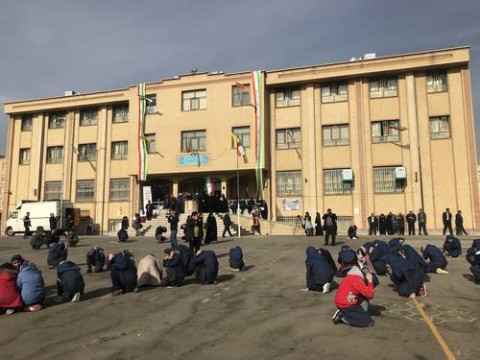
GCED Basic Search Form
Quick Search
You are here
News

On 29 November 2017, UNESCO Tehran Cluster Office supported the International Institute of Earthquake Engineering and Seismology (IIEES) in conducting the 19th national earthquake and safety drill which simultaneously took place in all schools across Iran. By simulating earthquake situations in schools and their communities, the initiative aims to strengthen disaster risk reduction awareness and preparedness in the country.
The theme of the 19th national earthquake and safety drill was ‘Safe Schools, Resilient Society’. Since 2015, IIEES has been selecting pilot schools to perform the drill at the community level, mobilizing citizens living in the vicinity of schools to join in the drill. In this new process, initiated by the Strategic Committee of IIEES, schools transform into the local crisis management center when an earthquake strikes.
This year, community-led and community-driven drills were held in one selected school in every province of Iran. By 2025, IIEES envisions that all safe schools in Iran will function as a disaster management hub at their local community.
An independent institute under the Ministry of Science, Research, and Technology, IIEES was established in 1989 following the recommendation of the 24th UNESCO General Conference. The Institute has played an effective role in strengthening formal and informal education on disaster risk reduction at the school and community levels, enabling students and locals living in the vicinity of schools to become more familiar with the basics of earthquake preparedness.
By simulating earthquake situations in schools and their communities, IIEES –with the support of UNESCO- aims to increase disaster risk reduction awareness and preparedness, not just in the Islamic Republic of Iran, but in its neighboring countries as well. Given the earthquake-prone characteristic of the region, the initiative aims to boost students' readiness in the face of earthquakes and help make countries of the region less seismically vulnerable.
At 10:18 AM, an earthquake alarm was broadcasted on Iran’s national radio station. At Esmat Girls’ School, the selected school for the community-based drill in Tehran, the students evacuated the building, forming organized lines. Students playing in the yard covered their head and dropped to the ground and those inside classrooms dropped under a desk or table. Teachers and other individuals within the school premises also participated in the earthquake and safety drill.
Meanwhile, a first aid demonstration was conducted by some trained students in the school yard, with assistance from the Iranian Red Crescent Society and firefighters. Different methods of evacuating casualties, emergency sheltering, fire extinguishing, and evacuation guiding, were also demonstrated.
The 2017 national earthquake and safety drill was organized by IIEES in collaboration with the UNESCO Tehran Cluster Office; the Ministry of Education; the Ministry of Science, Research and Technology; the Ministry of Interior; the National Disaster Management Organization; the Iranian Red Crescent Society; and the Islamic Republic of Iran Broadcasting.
Representatives and observers from the Economic Cooperation Organization, the Embassy of Denmark, and the Embassy of Sweden were also present during the drill.
URL:
